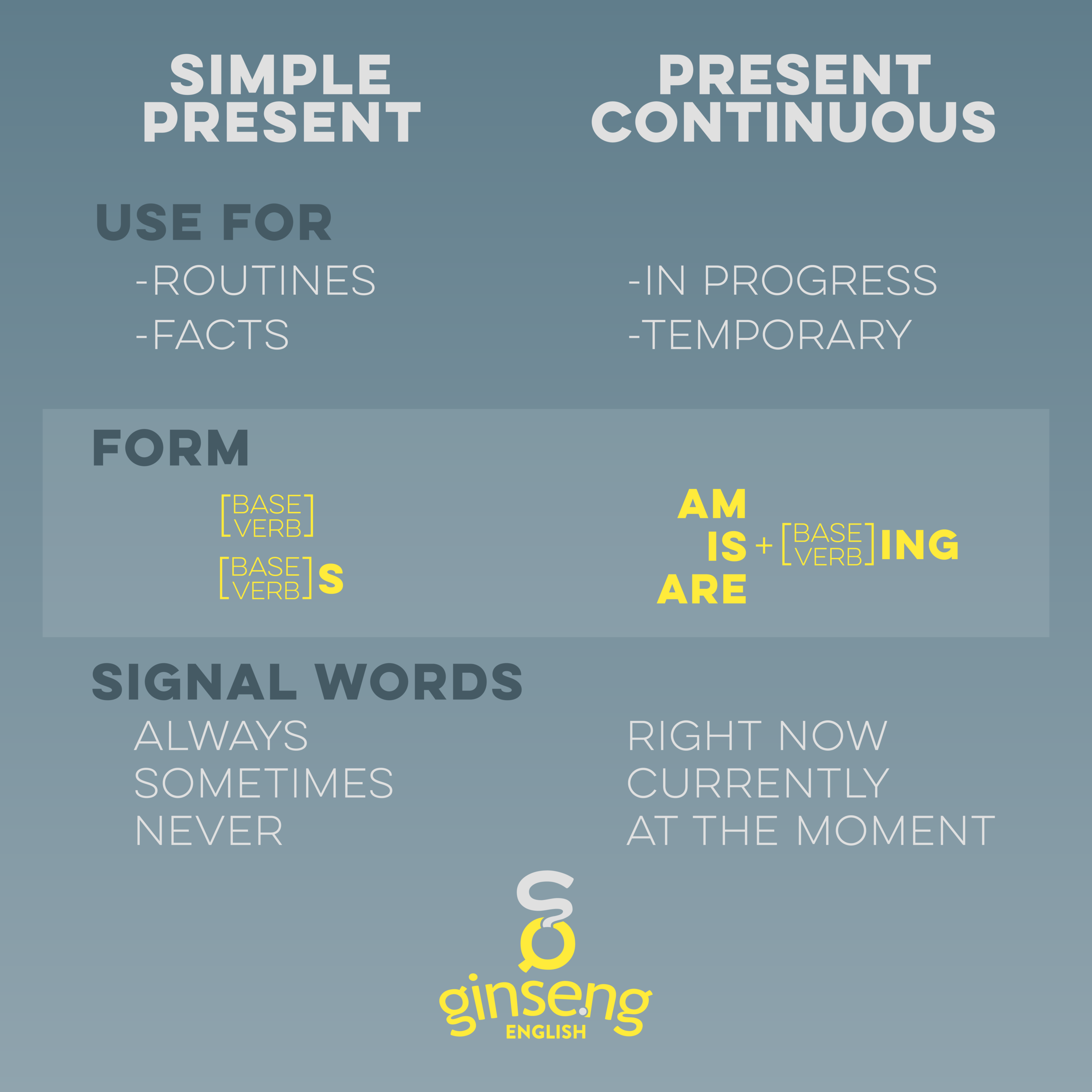Two verb forms that are confusing for many students are the simple present and the present continuous (also called the present progressive). Both of these verb forms talk about the current moment, now, the present—that’s why they are both in the present tense. But they talk about very different aspects of the present.
The simple present is used for things that are true in general, or happen repeatedly. Think about this as a big, wide present tense. Birds fly. The sky is blue. I like grapes. I have a dog.
On the other hand, the present continuous is often used for right now, the exact current moment. This is a small present tense. There is a start and an end. It is happening right now but it will stop in the future. I am reading. It is raining. My sisters are talking.
Form
When you are making an affirmative statement, the simple present is just a single word, either the base form of the verb or with a final -s (after the subject pronouns he, she, it, or a singular noun).
I watch TV.
He exercises.
For present continuous, we use the present form of the verb to be (am, is, or are) and then the -ing form of the verb.
I am watching TV.
He is exercising.
Signal Words
The simple present tense is often used with adverbs of frequency: always, never, sometimes, frequently, rarely.
I always brush my teeth.
I never eat bacon.
I go to the beach sometimes.
I exercise frequently.
I rarely watch TV.
The present continuous is often used with adverbs and adverb phrases that emphasize the current moment or that a situation is only temporary, such as right now, at the moment, currently, and for the time being.
I'm sitting in traffic at the moment.
For the time being I am living in Brooklyn but we will move in September.
Right now I'm studying.
I am having dinner at the moment.
Exceptions
Note that some verbs (called non-continuous verbs or stative verbs) describing feelings, senses, states of mind, and states of being are generally used in the simple tenses only, or else have a different meaning when used in the simple vs continuous forms.
Simple Present and Present Continuous

